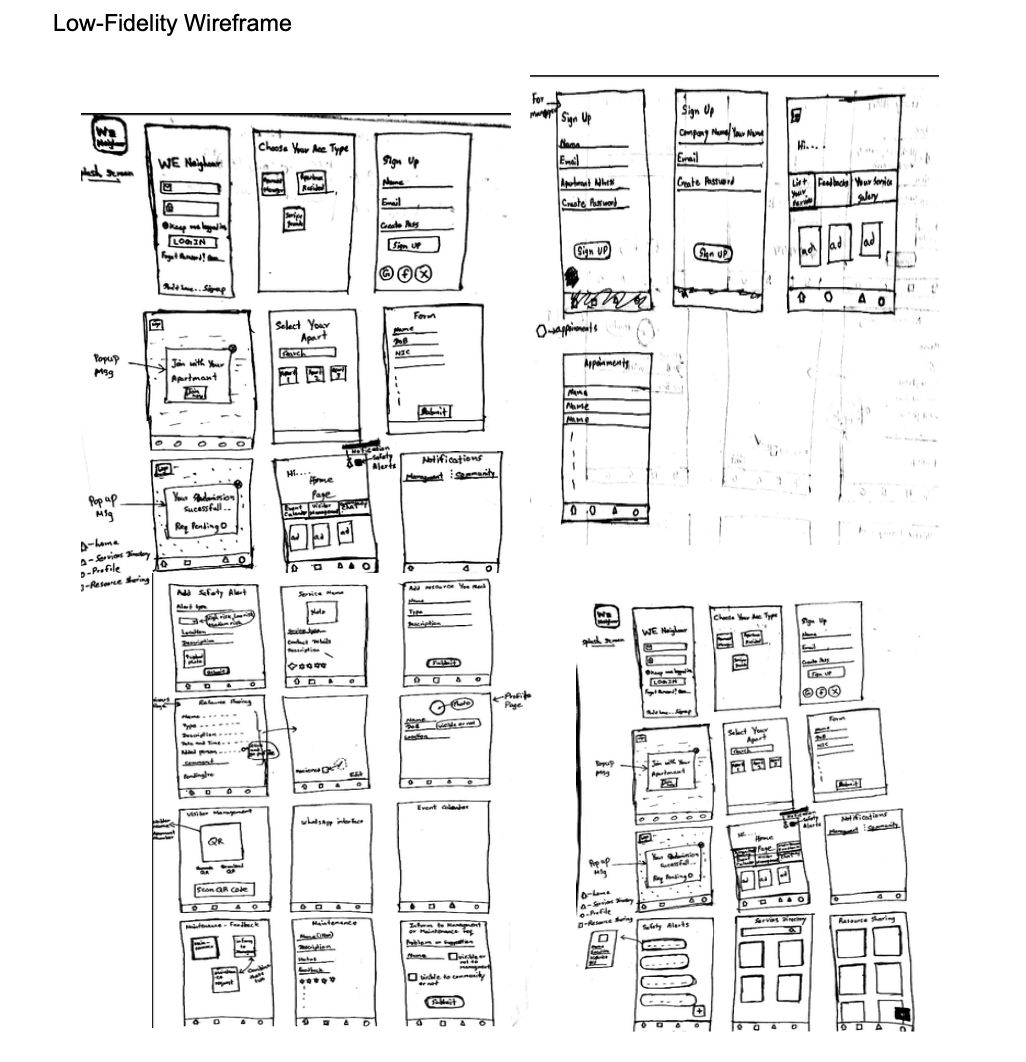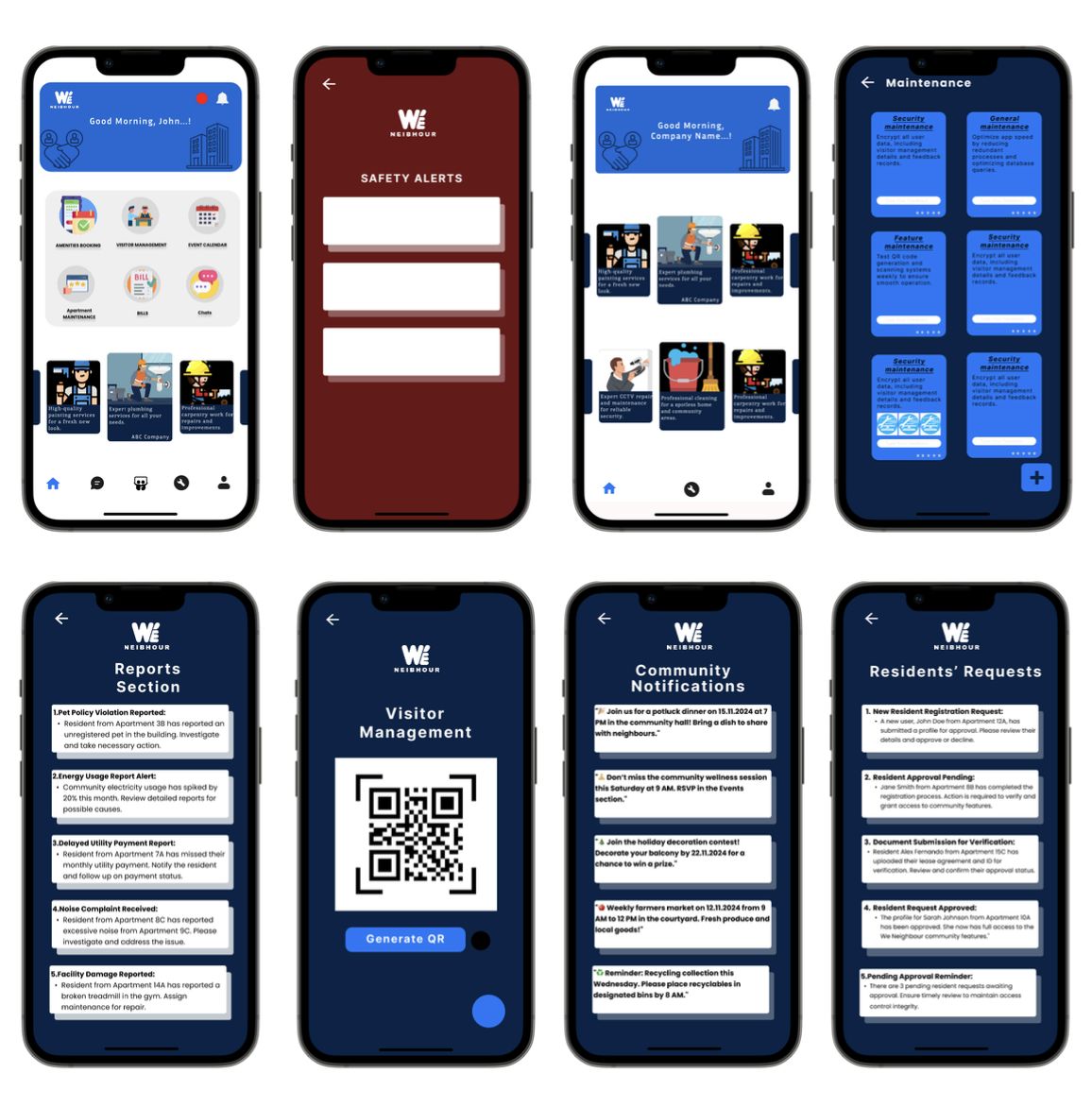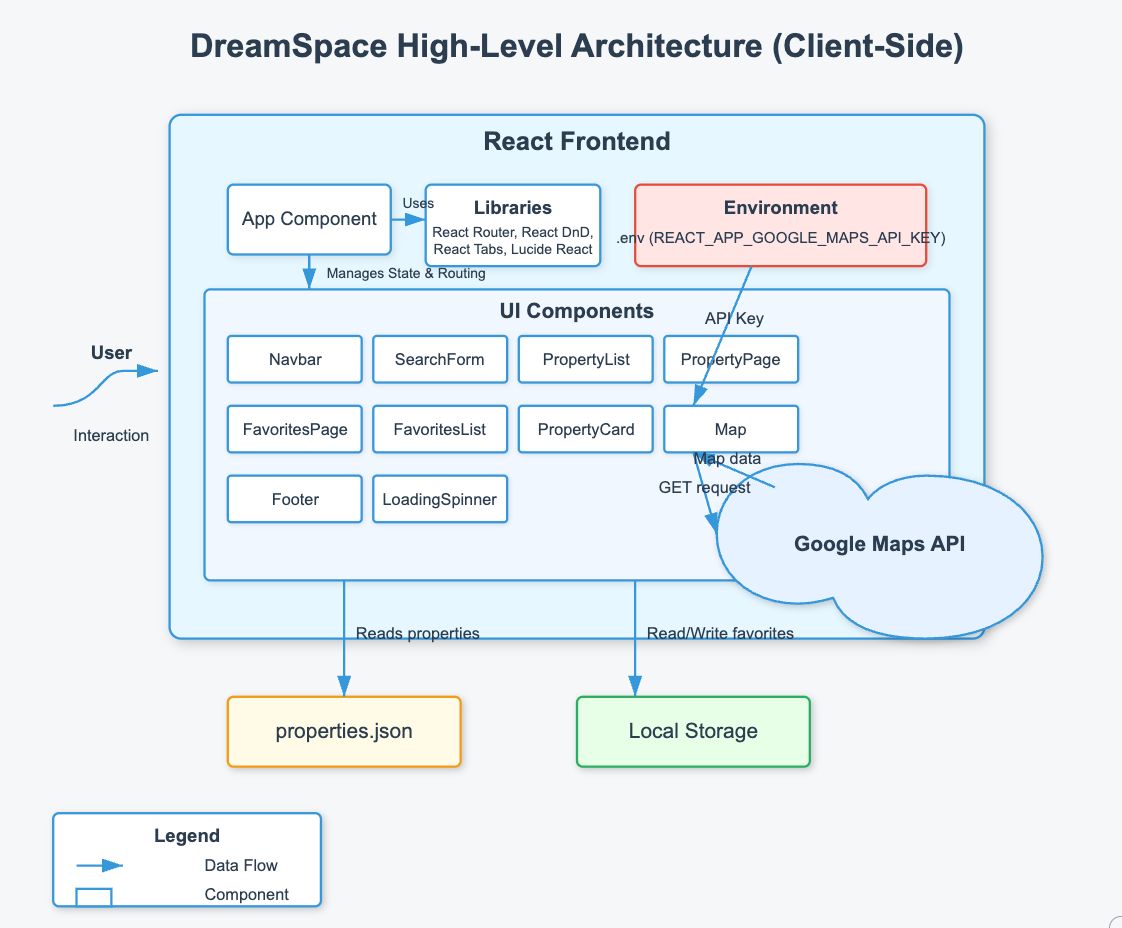Introduction
About the project
"We-Neighbour" is a mobile app built for urban apartment residents in Sri Lanka, sitting at the intersection of residential living and technology. Our goal was to tackle communication breakdowns, security gaps, and the lack of community spirit in these high-density complexes. We created a platform that brings residents and managers together, making daily life safer, more connected, and more efficient. By the end, we delivered a tool that’s already transforming how people live in apartments—less isolation, better access to resources, and a real sense of belonging.
Marketing Website: https://www.weneighbour.live/
🤔 Problem Space
Problems to Solve
Apartment dwellers in Sri Lanka’s cities struggle with patchy communication, shaky security, and no easy way to share resources or build community.
👉 Problem: Spotty Communication Channels
Residents miss out on critical updates—like power cuts or maintenance schedules—because they’re stuck relying on WhatsApp chats, notice boards, or word-of-mouth. It’s a mess: messages get buried, not everyone sees them, and there’s no accountability.
Current Solution
Right now, people pin paper notices in the lobby or send group texts that half the building ignores. It’s unreliable and slow.
How We Know It’s a Problem
Residents in Colombo say they miss 30% of key updates, per a 2024 survey we ran.
Feedback from 50% of tenants shows they’re fed up with the confusion.
👉 Problem: Weak Visitor Security
There’s no proper way to track who’s coming in and out, leaving buildings vulnerable to strangers wandering in unchecked.
Current Solution
Security guards scribble names in a logbook—messy handwriting, no verification, just a hope it’s accurate.
How We Know It’s a Problem
15 security breaches in 2024 tied to untracked visitors, according to Colombo apartment records.
Residents keep raising this at meetings—they’re worried.
👉 Problem: No Community or Resource Sharing
People don’t know their neighbors and end up buying stuff they could borrow, like tools or party supplies. Events? Barely happen because no one’s coordinating.
Current Solution
Borrowing’s a favor between friends, if you’ve got any, and events are a rare whisper down the hall.
How We Know It’s a Problem
40% of residents feel alone in their buildings, says a 2024 urban living poll.
Spending data shows folks buying duplicates of shareable items.
Why Solve These Problems?
Fixing this matters because apartment living is booming—10% more people every year—and these gaps are dragging down safety and happiness.
Goals
Company Objective 🎯
“To build a modern platform that boosts connection, safety, and efficiency for urban apartment communities.”
Project Goals
Goal: Create a one-stop app to replace patchy communication, tying into that connection piece.
Goal: Add QR visitor tracking and safety alerts to lock down security—safety’s covered.
Goal: Set up resource sharing and event tools to bring people together, hitting that efficiency mark.
User Stories
Resident
Your average resident’s a busy professional or parent in Colombo, wanting an easier, safer life.
Goals: Catch updates, feel secure, borrow a drill instead of buying one.
Needs: Instant alerts, a visitor system that works, a sharing hub.
Other: They’re tech-friendly but tired of the current mess.
Building Manager
The manager’s juggling tenant complaints and upkeep, trying to keep everyone happy.
Goals: Share news fast, fix issues smoothly, vet who’s who.
Needs: A notice tool, maintenance tracker, profile controls.
Other: Stressed and bogged down by paper trails.
🌟 Design Space
UI Design
We went for a clean, no-nonsense look—think a dashboard with tiles for notices, events, and alerts. It’s split by role: residents see community stuff upfront; managers get admin tools. Easy to use, hard to miss what matters.
Design Sketch / Low-fidelity Wireframe

High-fidelity Design

Design System 🎨
We built a custom system to keep things tight.
Why: Consistency across screens—buttons and cards look the same everywhere.
How: Blue for trust, green for action, Roboto font for clarity, and reusable bits like alert tiles.
Development Phase
Technology Stack Selection
1. Frontend - Flutter
Why Flutter?
One Code, Two Platforms: Covers iOS and Android without doubling the work—perfect for our diverse users.
Great UI: Widgets let us craft a slick, custom feel for things like the calendar and forum.
Speed: Native performance means alerts and QR scans don’t lag.
Fast Fixes: Hot reload kept us moving, tweaking the UI on the fly.
2. Backend - Node.js with Express & MongoDB
High-Level Architecture Diagram

Key Features of the Software
1. Resource Sharing Platform
2. Visitor Management with QR Codes
What: QR codes for guests, saved in MongoDB, scanned via Flutter.
How: Flutter’s QR library keeps it simple and works offline—security’s tight.
3. Safety Alerts and Maintenance Requests
What: Push alerts for emergencies and a way to log fixes, tracked in MongoDB.
How: Firebase in Flutter sends alerts fast; Node.js APIs handle the rest.
4. Event Calendar
What: Shows events and bookings—like gym slots—in MongoDB, with a Flutter UI.
How: A scrollable widget syncs with Node.js for live updates.
5. Community Forum
What: A chat space for ideas, stored in MongoDB, shown in Flutter lists.
How: Nested comments in Flutter, powered by Node.js for smooth threading.
6. Community Notices
What: Manager posts go straight to phones, held in MongoDB.
How: Flutter cards for style, WebSockets for urgent pings.
Challenges Faced and Solutions
Problem: Slow Push Alerts
Early on, safety notifications lagged under load—unacceptable for emergencies.
Solution:
Firebase Boost: Switched to Firebase Cloud Messaging in Flutter for speed.
Priority Lane: Urgent alerts jump the queue, hitting phones instantly.
Future Vision / Next Steps
Long-term Vision
Add AI to predict maintenance—like spotting a leaky pipe early.
Go rural with an offline mode for spotty signal areas.
UI upgrades: multi-language options and bigger text for older folks.



Get visibility from recruiters & peers
Build your portfolio & personal brand
Connect with like-minded developers
